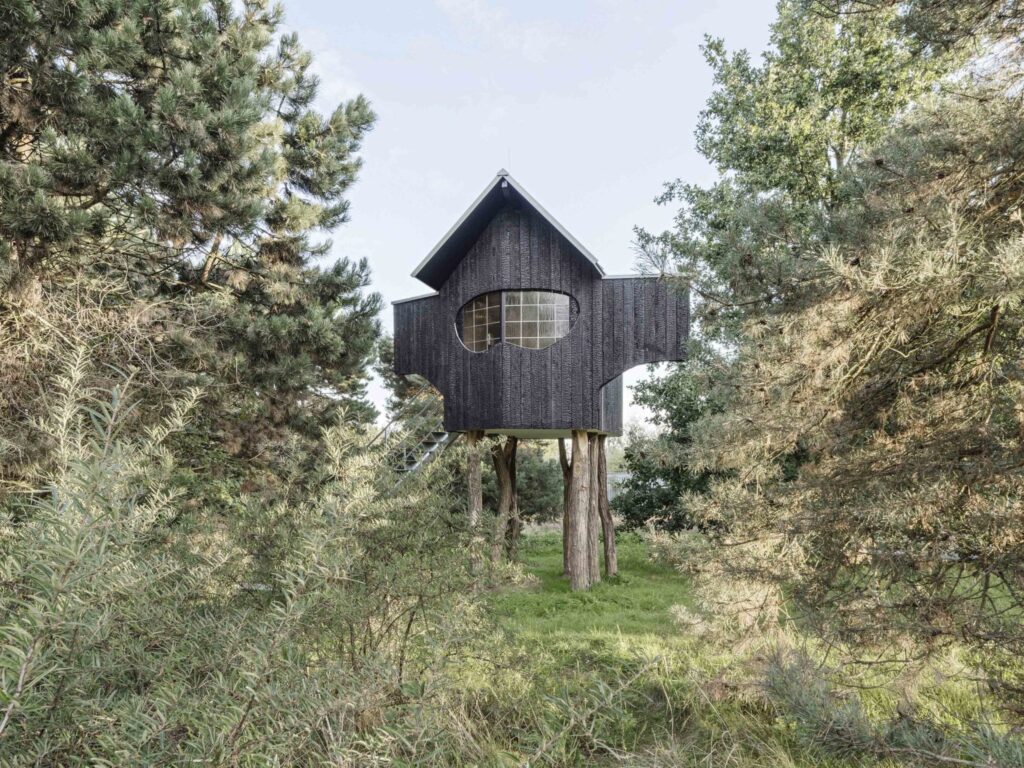
Suzanne Swarts ' knowledge of art goes far beyond what can be admired within the walls of 'her' Voorlinden. In MASTERS, the museum director shares her insights, experiences and passion in an almost poetic way. Works of art in itself!Text: Suzanne Swarts
Image: Tomas RiehleWho crosses the border near Venlo and drives on for about three quarters of an hour, arrives at an oasis in the German river landscape. Among the trees, plants and hills, roofs of brick and glass protrude from the greenery. They make every visitor curious about what is to come.
Art in parallel to nature. It was this quote by painter Paul Cézanne that inspired Düsseldorf art lover Karl-Heinz Müller, who became rich from real estate trading, when he made Insel Hombroich into the museum island it is today. In the early 1980s he bought this islet, located in the bend of the narrow river Erft. On the land stood only a nineteenth-century villa, a dilapidated orangery and here and there a tree. Around it were farmlands, stretching as far as the eye could see. Now, almost forty years later, nature, architecture and art come together optimally on the museum island of Hombroich. Müller let the water surround the land, planted trees and shrubs and created terraces and ponds. Since then, nature on the island has only become more lush: boxwood hedges reach to the sky and plant vines freely go their way.Photo: Tomas RiehleIn the midst of nature are several dozen buildings, which Müller, who died in 2007, liked to call "walkable sculptures. They take the form of a labyrinth, a coffee house, a greenhouse or a lodge. Chapels in the landscape they are, as if you stumble upon a sacred house where a special moment once took place. What you find inside is more than extraordinary. During his lifetime, Müller collected works by Henri Matisse, Yves Klein, Alexander Calder, Hans Arp, Kurt Schwitters and Rembrandt van Rijn, among others. But sculptures from the Khmer Rouge and antique art from China are also part of the collection. They hang in sunlit rooms that are barely mechanically heated. The doors are open, allowing the wind to blow freely inside. There are no signs on the white-plastered walls telling visitors what they are looking at. There are no attendants walking around who can tell you more about this wonderful combination of art factors. This is the only way to observe the art undisturbed. Yet in all the years of Insel Hombroich's existence, never a case of vandalism or disturbance has been reported, I am told. I understand. Walking through the landscape, with no phone coverage, with only the occasional other visitor in my path, it never occurs to me to jeopardize the tranquility of this special piece of the world. I only dare to look around breathlessly, poke my head around the corner of a new brick house, where the vibrant colors of new art glare at me. The estate is also home to studios where artists can work on their new projects in peace. I imagine myself to be one such artist, surrounded by dozens of walk-in sculptures in more than twenty acres of hilly nature. I cannot imagine a more inspiring environment.
You can read this article much more in MASTERS #46. Never miss anything from MASTERS? With 4 high-profile MASTERS editions, the annual LXRY LIST and many more extras, you will easily receive lots of reading pleasure at home: substantive reports, great photography and unique brands, trends and places in the world. Give it to yourself or a loved one as a gift. Close your subscription easily here.Photo: Suzanne Swarts
© 2024 MASTERS EXPO. All rights reserved.